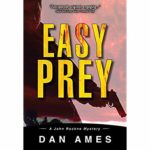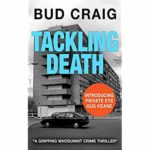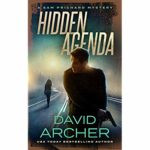Of late, I’ve had several of my fellow writers tell me my book covers don’t reflect the genre, or they need a bit of work, or that they could be better — more like the top selling indies in the genre.
All of that may be true and may be part of the reason I’m not rolling in the dough after 3 years of being an independent author-publisher.
So I’ve been having myself a major think. Significantly enough, the above comments came on the heels of my having listened to the two modules in Mark Dawson’s Self-Publishing Formula 101 course on covers and blurb writing.
Mark Dawson’s cover designer and artist, Stuart Bache, in the module on covers noted there are two different approaches to book covers: genre similar and genre standout. If you take a look on Amazon or even a walk through a bookstore, you’ll quickly see what is most popular. Genre similar. Why?
Because people are in a hurry, as the thinking goes, and what a genre similar cover does is tell the potential reader this is a sci-fi novel or a romance or a mystery or a thriller. Then other factors begin to influence. Title. Author name. Blurb.
However, if I’m specifically looking for a science fiction novel, a genre similar cover does nothing for me because I already know I’m looking for science fiction. I’m standing in the science fiction section of the bookstore. Or I searched for science fiction on Amazon. I think that is something that’s important to keep in mind.
Bryan Cohen, who presented the module on blurb writing, said that Mark Dawson’s own survey of his readers, asking what actually got them to buy the book, said it was the blurb — by a 5 to 1 margin — over the cover. Why? Because Dawson’s covers are all genre similar. There is nothing to distinguish his covers from any other author’s in the genre.
As a reader, not a writer, but as a reader, what do I look for when I’m looking to buy a book? Me. Not some survey, or industry standard. Me. What do I look for? After all, I’m the reader I know best.
I think that is an important question to ask. So I expanded my think to include the actions I went through to buy my last few books. And what I came up with for me is:
Unless the cover is truly a standout cover, it’s the title that draws my attention. Or the author’s name. When looking at the search results.
I haven’t been in a brick and mortar bookstore in quite awhile, so I limited myself to how I go about looking for a book on Amazon. This is the procedure I came up with for how I, a 64-year old guy, looks for a book to buy. Keep in mind younger men may do things differently, as most likely do women.
- I select the Kindle store.
- I key in the genre or sub-genre I want to read.
- I scan the search results.
- I pick a book.
- I read the blurb.
- I take a look at the reviews.
- If I’m still interested, I “Look Inside”.
- If still interested, I buy the book.
Those are the steps. Now let’s look at an example.
At step 2, I keyed in “private investigator mystery series”.
The results I got — minus cozies that got in there and box sets and sponsored ads — were the following in order on the first page:
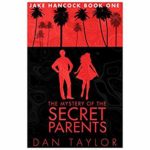 The Mystery of the Secret Parents – Dan Taylor
The Mystery of the Secret Parents – Dan Taylor
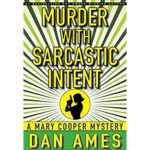 Murder with Sarcastic Intent – Dan Ames
Murder with Sarcastic Intent – Dan Ames
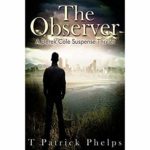 The Observer – T. Patrick Phelps
The Observer – T. Patrick Phelps
 Haggard Hawk – Douglas Watkinson
Haggard Hawk – Douglas Watkinson
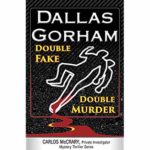 Double Fake, Double Murder – Dallas Gorham
Double Fake, Double Murder – Dallas Gorham
After scanning the list, I ruled out Murder with Sarcastic Intent because the cover hurts my eyes, it’s that garish to me.
From the thumbnails, you can see genre similar prevails. What caught my eye was the first book: The Mystery of the Secret Parents. The cover is somewhat standout, the colors catching my eye. It doesn’t convey genre very well, but then I already know it’s a mystery because that is what I searched for. The title is a good mystery title. Not thrillerish. Just a good old-fashioned mystery.
So I clicked on the book and read the blurb, which was okay. So I looked at the reviews. There were some that threw up red flags for me, but I decided to “Look Inside”. Once I did, I said, Nope. Not for me. Back to step 3.
The only other book on the page of search results that caught my eye was Dallas Gorham’s Double Fake, Double Murder. The cover was a traditional murder mystery cover, which is what I like. The title conveyed the same idea, so I took a closer look.
The blurb didn’t particularly grab me. Too much selling in it. The reviews, though, were pretty good, so I took a “Look Inside”. Sad to say, I wasn’t impressed, and passed on the book.
Analyzing my process, I came to the conclusion that for me — genre similar covers without an eye-catching title — don’t pull me in from the search page. Notice, I passed on Dan Ames’s book with the genre similar cover and lackluster title. Which was the second book on the list.
What caught my eye, were the two covers that were somewhat different. With the title being the clincher.
If a standout cover and a snappy title are what catch my attention on the Amazon search page — where I’m already looking for a genre specific book — then why would I want to put boring genre similar covers on the books I write? I think the answer is obvious: I don’t.
To my mind where all of this genre appropriate cover advice goes south is that I’m not looking at a mix of genres and trying to find the genre I like. Which the cover would identify for me. I’ve already passed by that step by searching specifically for the genre I want to read. No one seems to have grasped that.
Now the danger in having too standout of a cover, is it can turn people off. As did Ames’s Murder with Sarcastic Intent.
Circling back around, as I’ve noted in previous posts, there is a lot of group think that goes on with people. There is a lot of thinking invading self-publishing that comes from traditional publishing. Which may be appropriate for the Big Corporate types, but not for us indies.
Even when I regularly visited bookstores and looked at books on a self, I went to the genres I wanted to read. And I passed by all the genre similar covers, unless they had a standout title, or a familiar author name, and picked up the book with the standout cover.
So are my covers hurting my sales? It’s possible. Or is some other factor at play here? Such as my doing virtually no advertising?
I’m inclined to think the virtually no advertising may be the actual culprit here, not the covers.
Of course the only way to know for sure is to do a test. Slap a few genre similar covers on my books, do nothing else, and see if I get better sales results. That test I’m considering. It might prove to be very interesting.
As always, your comments are very much welcome. If you’re inclined, take a look at my Amazon page and see if you think my covers are a problem. If you think they are, let me know. I genuinely want to know. But do look at them as I did above, in a long list of books in the same genre. Just so we keep things the same.
Until next time, happy reading!
Share This!